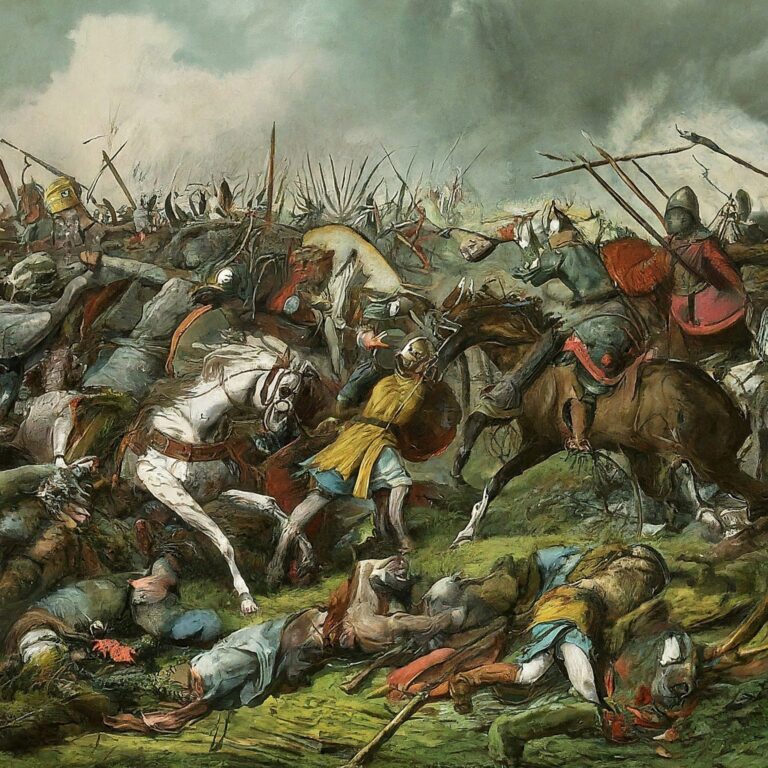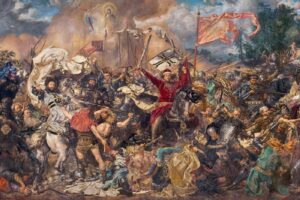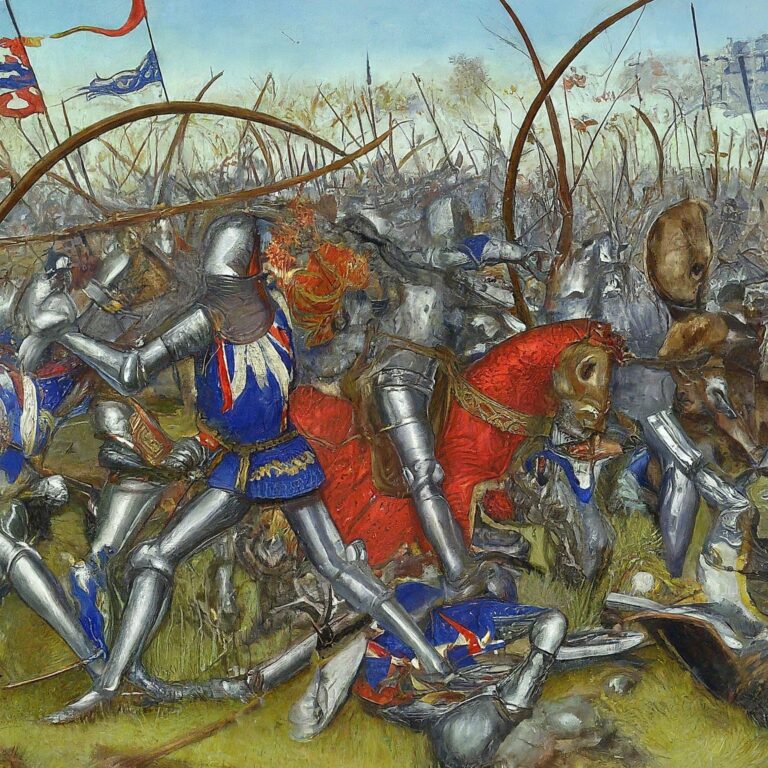The Battle of Hattin, fought on July 4, 1187 CE, was a critical encounter between the Crusader Kingdom of Jerusalem and the Muslim forces of Saladin, Sultan of Egypt and Syria. The battle took place near the Horns of Hattin, a pair of hills near the Sea of Galilee in present-day Israel. This decisive Muslim victory led to the fall of Jerusalem and significantly altered the course of the Crusades.
By the late 12th century, Saladin had unified much of the Muslim world and was determined to recapture Jerusalem, which had been under Crusader control since the First Crusade. The Crusader army, led by King Guy of Lusignan, marched out to confront Saladin’s forces, but they made a crucial mistake by marching across the dry, barren landscape without adequate water supplies.
Saladin’s forces, well-supplied and familiar with the terrain, harassed the Crusaders as they struggled across the arid plains. The Crusader army became increasingly exhausted and demoralized. When they reached the Horns of Hattin, they were surrounded by Saladin’s forces. Deprived of water and subjected to relentless attacks, the Crusader army was annihilated.
King Guy and many of his knights were captured, and the True Cross, a revered Christian relic, was seized by Saladin’s forces. The Battle of Hattin opened the way for Saladin to reclaim Jerusalem later that year, which sent shockwaves through the Christian world and led to the launch of the Third Crusade.
The victory at Hattin established Saladin as one of the most celebrated leaders in Muslim history. It marked a turning point in the Crusades, shifting the balance of power in the Holy Land back in favor of the Muslims and leading to a renewed struggle for control of Jerusalem.



